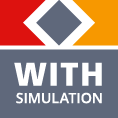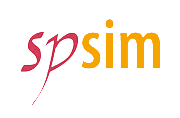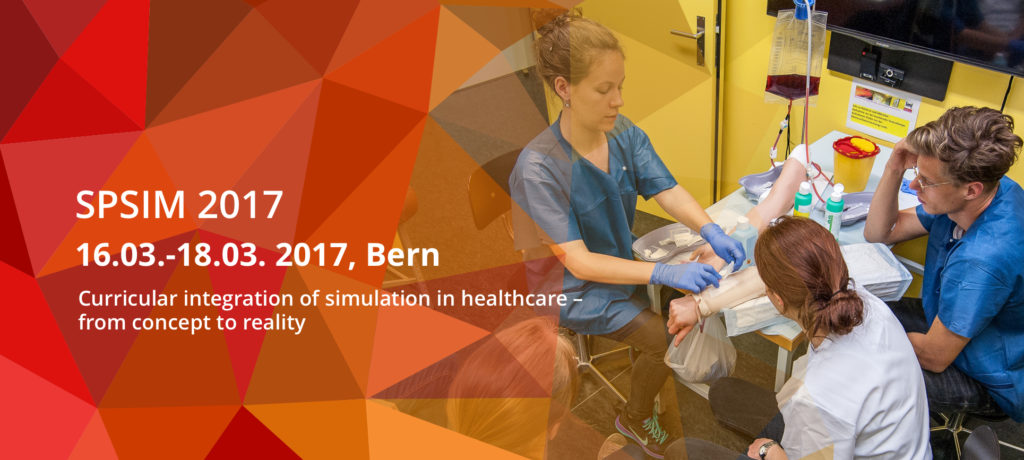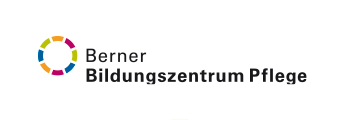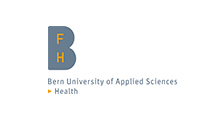| Time |
Title |
| 10:00 – 10:15 |
How realistic are low cost, low fidelity bronchoscopy simulators? |
|
Joel Gysin, Tina Pedersen, Annigna Wegmann, Lorenz Theiler, Robert Greif
Department of Anaesthesiology and Pain Therapy, Inselspital, Bern University Hospital, University of Bern, Switzerland; joel.gysin@students.unibe.ch
Background: Competent bronchoscopy needs training, and simulation is a well-established educational approach before anesthesiologists or pulmonologists perform this invasive procedure on patients (1). In simulation, trainees practice how to orientate and steer the fiberscope within the bronchial tree. Several low-fidelity airway simulators are commercially available, featuring the key structures of the tracheobronchial tree. We questioned the accuracy and the realistic representation of human anatomy in these available simulators. For this reason, to provide a realistic and cost-effective airway model, we developed a bronchial tree simulator based on human thorax CT-scans using rapid prototyping (3D-Print) technology (Shapeways Eindhoven, Netherland).
Research question and outcome measurement: The aim of this prospective, randomized, single-blinded, crossover, comparison study was to evaluate how realistic our 3D-print model would mimic human anatomy compared with two commercially available airway simulators. The primary outcome was the rating of participants when localizing the right upper lobe with a fiberoptic bronchoscope, measured on a visual analog scale (VAS) ranging from 0mm representing “completely unrealistic anatomy” to 100mm representing “indistinguishable from a real patient”. Secondary outcomes were the ratings when placing a bronchial blocker in the left main bronchus, when aspirating fluids from the right lower lobe, and the overall realism of the models. Our hypothesis was that our model would be non-inferior to the commercially available simulators.
Methods: With ethic committee approval and written informed consent, 30 experienced anesthesiologists and pulmonologists from the Bern University Hospital were invited to participate. They performed three tasks in random order: 1) Localization of the right upper lobe; 2) Placement of a bronchial blocker into the left main bronchus; 3) Aspiration of 10ml water from the right lower lobe. The two commercial simulators were the Laerdal Airway Management Trainer with Bronchial Tree (Laerdal Stavanger, Norway) and the AirSim Advance Bronchi (TruCorp® Ltd, Belfast, Northern Ireland). All three simulators were covered with surgical drapes and the tracheas were intubated to provide identical conditions and blinding of the participants.
Sample size was calculated assuming the commercially available models would score 60mm (VAS) and non-inferiority was a score of ≥50mm. Given a significance level of 0.05 and a standard deviation of 15 mm, 16 subjects are required to reach a power of 80%. To account for assumptions and to secure the power of the study, we aimed to include 30 participants.
Results: So far, 16 participants were included. The preliminary results show a median VAS score for the primary outcome (localization of right upper lobe) of 70mm (interquartile range(IQR): 47 – 84mm) for Laerdal; 61mm (32 – 81mm) for TruCorp and 76mm (66mm – 88mm) for the 3D print model (p=0.0490 Friedman-test, effect size Cohen’s d= 0.93).
The placement of the bronchial blocker was rated (Median and IQR) 69mm (58 – 79mm) for Laerdal, 72mm (62 – 85mm) for TrueCorp and 73mm (57 – 83mm) for the 3D print model (p=0.5698).
Median VAS scores (IQR) for suctioning of fluid was: Laerdal 49mm (32 – 64mm), TruCorp 61mm (45 – 73mm) and 3D print model 59mm (31 – 77mm) (p=0.1738).
The median VAS scores (IQR) for how realistic the model was in general were: Laerdal 67mm (50 – 78mm), TruCorp 72mm (52 – 79mm) and 3D print model 73mm (68 – 80mm) (p=0.2910).
Discussion: The preliminary results suggest that the 3D printed model performs equally well or even better compared to the two other simulators. Given the differences in costs of approximately 1.000€ for Laerdal, 3.500€ for TruCorp (not possible to only buy the bronchial tree) versus only 90€ for the 3D print model, superiority of the 3D print model was reached with less than 5% of the costs. However, our model is only suitable for bronchoscopy training and not for intubation training, as it lacks a supraglottial airway. Since studies suggest that training with any kind of bronchoscopy simulator (high- or low-fidelity) will lead to better patient care and better performance in clinical practice (2, 3), our low-cost, yet effective, 3D print model could be an attractive alternative to commercially available simulators in order to train novices.
Conclusion: The 3D print bronchial tree model is non-inferior compared to substantially more expensive commercially available simulators. This suggests our model is an alternative for training basic bronchoscopy skills. Another advantage is the possibility of printing a training model for patients with complex anatomy, when using their CT-scans as template.
References:
1. Ernst A, et al. Chest. 2015;148(2):321-32.
2. Chandra DBet al. Anesthesiology. 2008;109(6):1007-13.
3. Naik VN et al. Anesthesiology. 2001;95(2):343-8.
|
| 10:15 – 10:30 |
Motion tracking for mass-casualty-incident simulations using cell phones |
|
Boris Tolg
University of Applied Sciences Hamburg, Germany; boris.tolg@haw-hamburg.de
Background: The simulation of mass-casualty-incidents (MCI) requires a huge amount of standardized patients (SP), medical and paramedical staff, resources and time. Nonetheless it is important to train the necessary protocols as often as possible to be prepared in case of a real situation. Since these simulations cannot be realized on a short-term regular base it is important to gather as much information as possible.
The project introduced here allows the role centered automatic tracking of participant movements in a simulated MCI scenario without gathering information about their identities. This tracking allows automatic detection of the time needed to rescue the SPs, the transport time to the treatment area and the time until the SPs are on their way to the hospital. The collected data can be used for debriefing while the role is separated from the involved participants. In that way a neutral review of the simulation is possible. Additional dissections of the simulation are also possible.
Project description: In this project a cell phone app is developed which allows live tracking of participants of an MCI simulation. The data is sent to a server, so that the current movement can be displayed and analyzed. The submitted information allows no inference to the real person or the submitting cell phone. The first message, which is sent only once gives background information of the function of the participant within the simulation e.g. emergency doctor, fireman or patient (red) and an optional tag which allows conclusion about the case depicted by the standardized patient. The following messages sent every second contain latitude, longitude and altitude information together with a time stamp.
Additionally a Windows program is developed which analyzes the submitted data. Current movements are displayed, so that the whole simulation is under surveillance. At the same time the Software allows the analysis of the submitted data. The submitted paths can be shown and the simulation can be replayed and discussed step by step. The area of operations is detected automatically and the movement coverage of that region is shown, so that hotspots of interest of the involved people can be identified.
Outcome or expected outcome: First test runs of the software show that it is possible to track the participants of an MCI simulation and display their movements live on a PC. The Area of operations could be detected, subdivided into smaller regions and the probability of passing through the smaller regions could be calculated. The result is a coverage map of the region marking the spots of interest for the medical and paramedical staff. By selecting only the movement history of special roles it is possible to show the interaction of these roles during the time of the simulation.
The whole simulation could be replayed so that all movements could be used for a debriefing. SPs within the simulation could be marked which allows the software to measure and display the time needed to find and transport the SPs.
Since the first test run was used to test the software and to implement missing features based on realistic movements, not all roles were measured in the course of the simulation. Hence the measured movements did not cover the whole scenario and they could not be used for a debriefing. As a next step the display of motion and event data shall be used for a debriefing in order to evaluate the advantages and possible optimizations of the method for the training.
Challenges: The detection of movement works well as long as the participants are outside of buildings and the GPS signal is not disturbed by e.g. concrete. Also the cell phone needs a good connection to the next network receiver so that the gathered data can be transmitted. The latter can be handled by implementing a data buffer that collects movement data if a connection to the network is impossible. This will save the data but of course prohibits a live tracking.
Within buildings the tracking is a challenge, since the network connection and the GPS signal is blocked by obstacles. A possible solution would be indoor GPS [1] which is not available in all buildings.
But further research has to be done to find a simple solution without an elaborate preparation of the simulation area.
Discussion: This project aims to develop a cell phone app that tracks movements of roles within a simulated MCI as well as a software visualizing the measured data to improve the analysis of events and the debriefing. First measurements show that it is possible to collect and analyze movement information as long as participants stay outside of buildings. Further development and research has to be done to improve the collection of data even inside of buildings and to proof that the collected data improves the debriefing.
References:
[1] Indoor Positioning via Three Different RF Technologies, Vorst et al., 4th European Workshop on RFID Systems and Technologies (RFID SysTech), 2008
|
| 10:30 – 10:45 |
Continuous Education for Communication Trainers: Using the method Flipped Classroom to improve Communicational Skills and enhance teambuilding |
|
Sibylle Matt Robert
Bern University of Applied Sciences, Switzerland; sibylle.matt@bfh.ch
Background: The Bern University of Applied Sciences, Health Division, collaborates with professional actors who act as Communication trainers (CTs). Compared to settings with standardized patients CTs have extended competencies. Apart from functioning as partners in the role plays and giving a short subjective feedback they are also moderating the demanding feedback discussion and link findings out of the role play with communication theory. In our setting there is no other faculty member present.
Collaborating with a team of CTs mainly consisting of external staff members means that they not only have to be trained in various communication skills. There has also to be time for measures to support teambuilding processes. In the past the design of the yearly workshop day contained inputs of lecturers as well as methods to transfer knowledge into everyday practice. This year we introduced an electronic educational platform and applied the method Flipped Classroom. In this concept the acquirement of knowledge is mainly situated during an online learning phase preceding the workshop. It’s based on the fact that persons in a learning process are highly motivated when they are often given individual feedback (Rheinberg 2012).
Project description: The e-learning elements are being communicated via an internet based platform (Moodle). The platform has two main goals: It is used for the preparation phase of the workshop. Secondly it’s also working as a library containing useful documents which is always accessible.
For the preparation phase the learning objectives were communicated and various tasks were defined: 1. Reading a text on the main subject containing literature references 2. Posting at least one question/remark on the e-learning platform concerning the text 3. Watching a short film with a counselling interview 4. Identifying several positive and negative elements regarding the communication skills of the interviewer. The questions and remarks of the CTs were answered online. These discussions were visible for all the team members and they were asked to study them.
During the workshop day various methods were applied to work further on the topics and to enhance team building. The focus here was on the development of a shared attitude towards the different roles that CTs are taking over.
Outcome or expected outcome: Compared to previous workshops the new concept helped focusing on exercising and reflection. Moreover it enhanced interactions between CTs and faculty members. Thirdly the gained time was used to introduce measures to support the team building process. The evaluation among CTs showed that the new methods were mostly appreciated, although this procedure increased the amount of time they had to invest.
Challenges: It was a challenge to introduce the various e-learning tools among users which are not all frequent users of internet based tools. This meant to establish easy access on the various platforms (e.g. video was on a different secured platform) and the visual guidance for the CTs on the plattform had to be as intuitive as possible. Regarding the preparation work before the workshop a good alignment with various material as well as clear timelines and exact verbalizations of the tasks and learning goals were time consuming. As the main platform should also serve as an always accessible library and tool to exchange information means also to keep it attractive and lively during the year.
Discussion: As the evaluation from all involved persons was mainly positive we keep using the e-learning tools as well as designing our workshops according to the flipped classroom method. For the further development we are looking into the variety of the used methods, focusing on possibilities to give more individual feedback on learning progression. Regarding the time consuming preparations we are also considering possibilities to use material developed in other contexts.
Reference: Rheinberg F. (2012). Motivation (8. Aufl.). Stuttgart: Kohlhammer
|
| 10:45 – 11:00 |
Development of a Wearable Electronic Sensor Array and Measuring Unit for Spine and Posture Analysis for Use with Standardized Patients in Medical Simulation and Education |
|
Björn Krystek1, Friedrich Ueberle1, Stefanie Merse2, Boris Tolg1
1University of Applied Sciences Hamburg, Germany; 2University Duisburg-Essen, Faculty of Medicine, Essen, Germany; Bjoern.Krystek@haw-hamburg.de
Background: Undetected spinal injuries after a casualty can have severe implications on the patient’s medical condition, especially when subjected to abnormal loads. During rescue missions and patient transport, these patients are exposed to an increased risk of secondary traumatization. Spine monitoring can help demonstrate critical movements and provide feedback to rescue workers or healthcare professionals. In specific exercises and simulation programs, rescue personnel can be trained for the interaction with patients with pre-existing spinal injuries. A small, unobtrusive system to measure spinal movement in medical simulation scenarios could be used to monitor and evaluate the participants.
Research question: This work is a feasibility study about the development of an unobtrusive spinal monitoring system that can be worn by a standardized patient (SP) without the other simulation participants becoming aware of the device.
Aim of this study was to evaluate whether small gyroscopic sensors affixed to multiple positions along the patient’s back can be used to measure and record detailed spinal movement.
Methods: The spinal monitoring system was developed using microelectromechanical (MEMS) gyroscopes and the Arduino platform for microcontroller programming. Multiple sensor elements were combined into a sensor array to retrieve inertial measurements from different positions on the patient’s back. A computer algorithm was used to calculate differential movement between the base sensor (located on the patient’s pelvis) and the remaining sensors (spread across the patient’s back). Measurements were logged onto an SD card and visualized using a 3D model of the skeletal human upper body.
Overall system usability was evaluated applying the sensor system to a test subject. Ease of use and connection of the system was noted by the test subject. A comparison of the output data and the real sensor orientation was done, overlaying a photographic image with the computer visualization. For this purpose, the sensors were mounted onto a bendable stand. Validity of these measures were tested for each axis independently. Additionally, a long-term data record (46 hours) was used to test the sensor stability.
Results: Usability of the system in its current development status shows room for improvement. The system is not small enough to be hidden underneath clothing and connection of the sensors requires the SP to lay perfectly still for the time of on-body calibration, which resulted in multiple attempts before data could be retrieved.
The visual comparison showed identical leanings, perfect correlation was not tested. Validity of measures on the yaw axis shows almost perfect alignment with the real yaw. On the pitch and roll axes, the output was slightly below the real rotation. On all three axes the sensor output for the first 20 ° showed minor deviations. The output from the three individual sensors was almost identical.
It was possible to gather constant data recordings for three sensors in ~150 ms intervals up to 46 hours. During that period all sensor readings started drifting apart at similar pace until they ended up completely reversed after about 24 h and returned to their initial values at the end of measurement.
Discussion: The collected data shows, that spinal monitoring using MEMS gyroscopes is possible. The on-body calibration process is very time-consuming and not up to its full potential. The sensors used in the proposed design are prone to sensor drift and may not be accurate enough for medical usage. The data processing algorithms have room for improvement on both the microcontroller and visualization part.
Conclusion: The study shows, that inertial measurements of the spine can be acquired using gyroscopic sensors. Further development and evaluation of other hardware components has to be done in order to ensure measurements with medical precision. For future iterations of this project, different hardware modules and software compensations have to be tested to account for the current limitations such as sensor drift and error of measurement. Further fields of application, such as feedback for SPs when exceeding a planned limited range of motion and uses in Ambient Assistant Living have to be considered in upcoming studies.
References:
[1]W. Y. Wong and M. S. Wong, “Detecting spinal posture change in sitting positions with tri-axial accelerometers,” Gait & Posture, vol. 27, no. 1, pp. 168–171, Jan. 2008.
[2]M. D’Amico, R. Bellomo, R. Saggini, and P. Roncoletta, “A 3D spine & full skeleton model for multi-sensor biomechanical analysis in posture & gait,” in 2011 IEEE Int. Workshop on Medical Measurements and Applicat. Proc. (MeMeA), May 2011, pp. 605–608.
[3]W. S. Marras, F. A. Fathallah, R. J. Miller, S. W. Davis, and G. A. Mirka, “Accuracy of a three-dimensional lumbar motion monitor for recording dynamic trunk motion characteristics,” Int. J. Ind. Ergonom., vol. 9, no. 1, pp. 75–87, Jan. 1992.
|
| 11:00 – 11:15 |
C4 : Centre Coordonné de Compétences Clinique : an interinstitutionnal partnership for the teaching of the clinical competences |
|
Nadine Oberhauser; Nadine.OBERHAUSER@hesav.ch
Haute Ecole de Santé Vaud, Switzerland;
The C4 is the result of an interinstitutionnal partnership established between HESAV[1], the FBM-UNIL[2], the hEdS La Source[3] and the CHUV[4] all based in Lausanne (Canton de Vaud). The project started a few years ago and the opening of the C4 is planed in 2020. Its aim is to promote the quality of health care, and develop the coordination and collaboration between health professionnals. Dedicated to simulation, the C4 will host about 700 to 1000 people per day, and allow an interprofessionnal approach and training of various care situations. The aim of the presentation is to enhance the interest and the complexity of the process and its aims.
[1] Haute Ecole de Santé Vaud,
[2] Faculté de Biologie et de Médecine de l’Université de Lausanne
[3] Haute Ecole de Santé La Source
[4] Centre hospitalier Universitaire, Centre des Formations |
